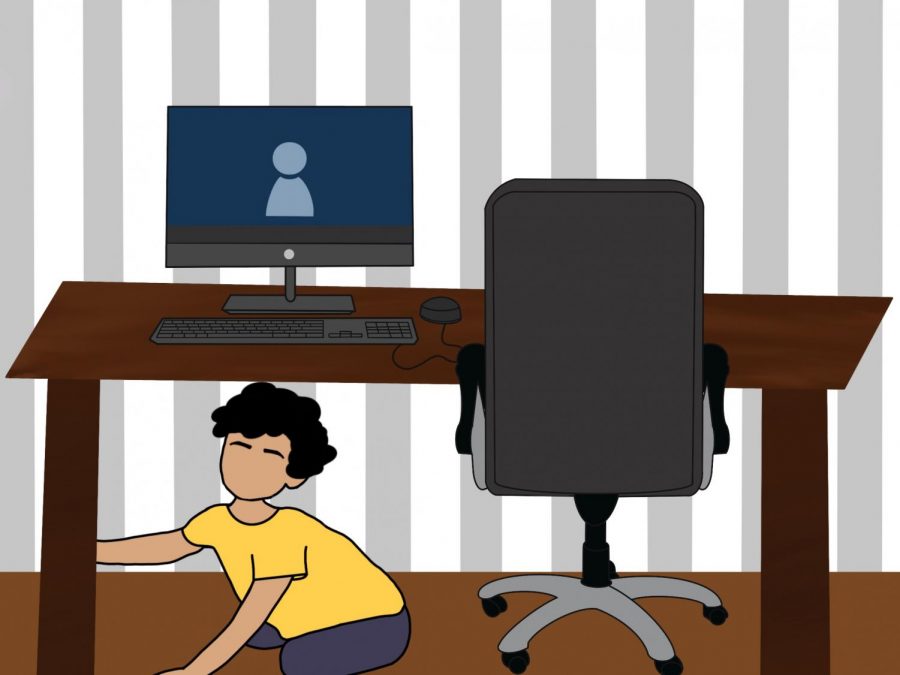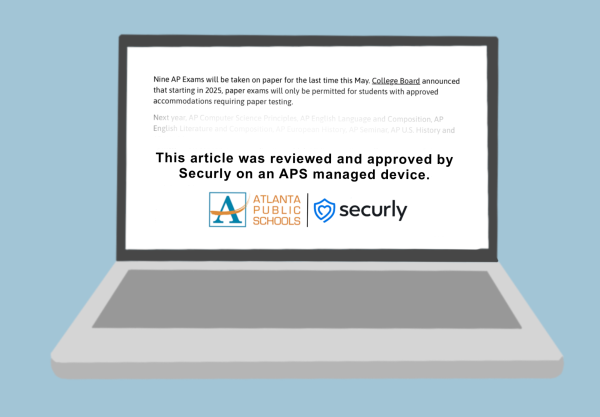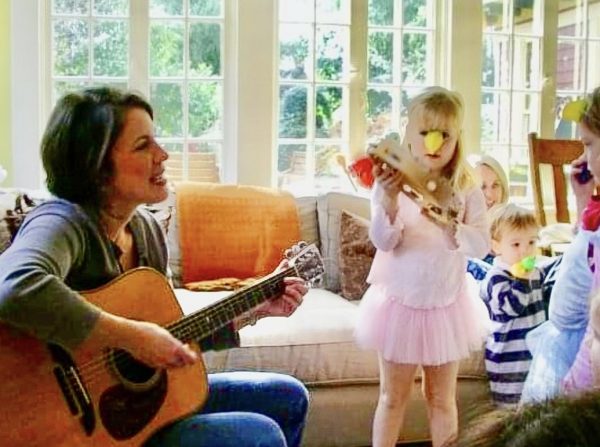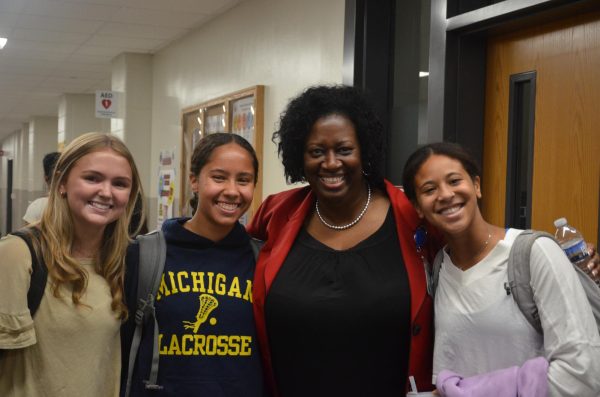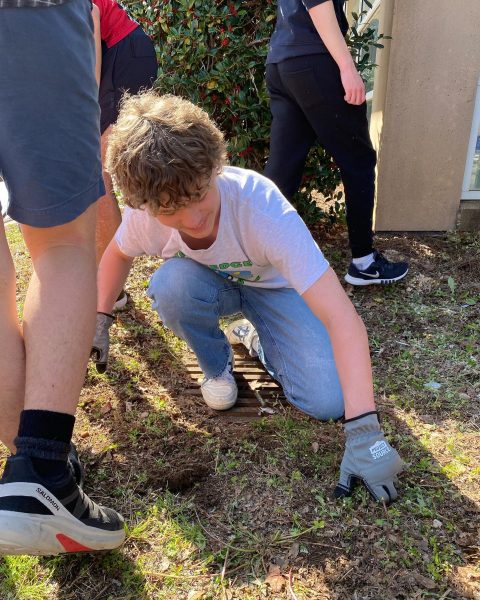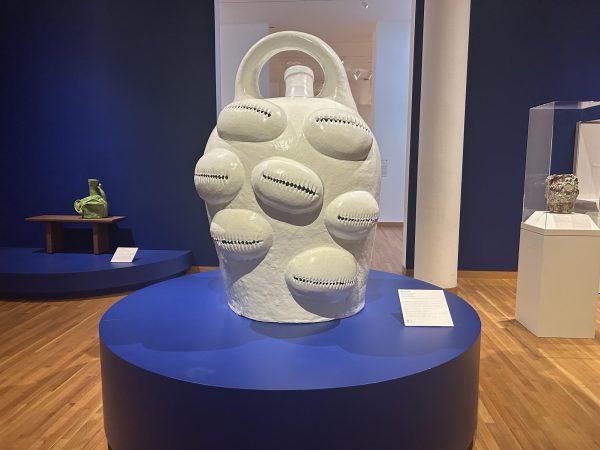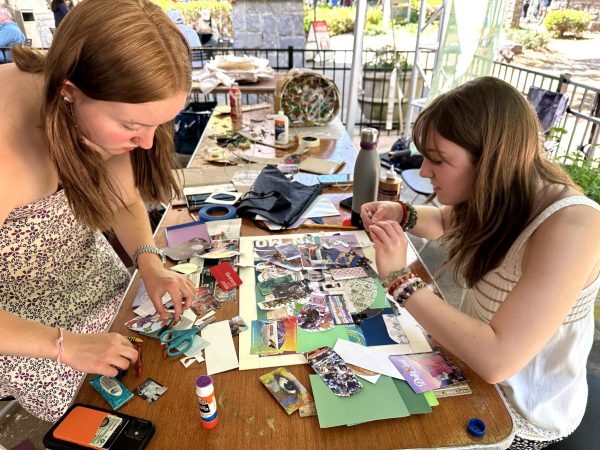Online learning presents barriers for Grady cluster elementary schools
First-grade teacher Kristen Guthrie has altered her teaching methods to accommodate the many changes caused by the COVID-19 pandemic. One difficulty she’s experienced is maintaining her six-year old students attention for the entire school day.
Kristen Guthrie, a first-grade teacher at Mary Lin Elementary School, is used to constantly being on her feet, circling the classroom and helping students in need.
However, due to the COVID-19 pandemic, her new normal consists of sitting in front of a computer in her empty classroom, interacting with students through a screen.
“Online teaching has been interesting,” Guthrie said. “The kids are doing a great job. I mean it’s really amazing how six-year-olds are so adaptable. They just run with it, but it’s been a big adjustment for me, especially the idea that you can see the kids, but you can’t really get to know them and their personalities.”
Guthrie was relieved when Atlanta Public Schools decided to start the year with virtual classes. That feeling was short-lived as she immediately began working to determine the most effective way to conduct her class at Mary Lin, which is in the Grady Cluster.
The district gave teachers three weeks of pre-planning.
“I must have taken like eight classes on how to teach virtually, so I did learn a lot,” she said. “I know there are some things I probably should have already known like I never knew how to make Google Slides and simple things like that.”
Guthrie said the training period allowed many teachers to improve their online classes from the spring, when teachers were thrust into virtual learning with no preparation at the start of the pandemic.
“On March 14th, I left the school, and then on the next school day, we were expected to just start teaching,” Guthrie said. “We didn’t know what we were doing, and the parents didn’t know what was going on, and the students didn’t know; so it was pretty stressful.”
Virtual learning presents technological difficulties that are difficult to prevent. Gretchen Green, a fourth-grader at Centennial Academy, said it can be hard to learn online because her internet connection can be inconsistent.
“The WiFi goes out a lot,” Green said. “It lately has been really bad for everyone in my class. I usually use my mom’s computer, but sometimes I’ll use my phone because it hooks up to the WiFi better.”
Green said there are positive and negative aspects of online and in-person learning. She enjoys walking around her house in between classes and having access to items not available at school.
Sisters Audra and Sloan Harrison, who are fifth and fourth graders at Morningside Elementary School, which also feeds into Grady, agree there are pros and cons of online learning. They believe the ability to interact in person with others outweighs the positives of virtual learning.
“I like in-person school a little bit better because you can see your friends and play with them and learning is a lot easier,” Sloan Harrison said. “At the same time, school at home is better because you can spread your work out and do it throughout the whole day, but I really do miss my friends.”
Both sisters said teachers have incorporated different activities into class this year. Sloan said her teacher uses IXL, an educational website that provides practice problems for multiple subjects.
Additionally, their teachers have modified typical in-class activities.
“We can’t do cards around the room, so she puts them in a Google doc, and we have to answer them from there, instead of going around the room to answer them and being able to get up and stretch,” Audra Harrison said.
Similarly, Guthrie has adjusted her normal class activities to accommodate online learning.
“We’re still reading books using the document camera, but it’s not the same because when you gather together on the carpet and you read it, you can see their faces of wonder and questions,” Guthrie said. “It’s so two dimensional; you can see their faces, but you can’t actually tell if they’re enjoying it.”
As part of her training, Guthrie tried to incorporate more engaging, hands-on activities for her first graders, but has faced challenges under the circumstances.
“We have workbooks that we do, but, in the classroom, we’d play more games,” Guthrie said. “The workbooks can be kind of boring, but it’s hard to play games when everyone is on the other side, and they don’t have all the materials because you can’t expect the parents to print all the stuff.”
Many students can become easily distracted, especially when surrounded by their favorite toys, books and personal belongings at home. Regardless, the Harrisons try to minimize the distractions.
“Given that [Sloan and Audra] are older and more independent and understand the value of education, I think they can appreciate the importance of trying to focus,” the girls’ mother, Kathleen Harrison, said. “We’re all sort of in our own different rooms in the house, and the girls have headphones to minimize noise, but obviously it can be hard to focus.”
For younger students, however, focusing can be more challenging.
“I start losing their attention by noon,” Guthrie said of her first graders. “Some kids just can’t handle it, you know, they’re sitting under their desk, or they’re on the floor, or there are some who sit there the entire time wide awake and alert.”
Guthrie is proud of her students’ ability to stay attentive throughout the day and said she cannot wait to return safely to school soon.
“I love teaching little kids and seeing them interact with each other, work on a project and help each other,” Guthrie said. “They’re so sweet to each other. I feel like by having a synchronous lesson, it develops a community, and I do still feel like we’re developing a community. But, it’s different when we’re not together.”

Grace Langan is a junior, and this is her second year writing for The Southerner. This year she is excited to be the Lifestyle and A&E Section Editor....
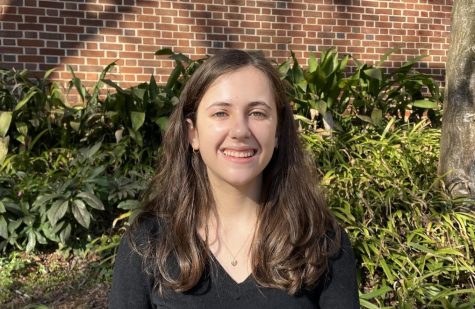
Anna Rachwalski is a senior and this is her third year writing for the Southerner. Outside of the newspaper, she is president of the Quiz Bowl team, is...


